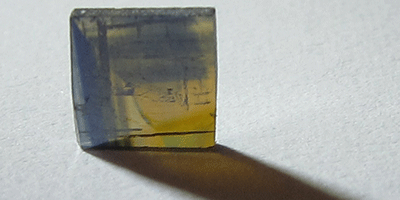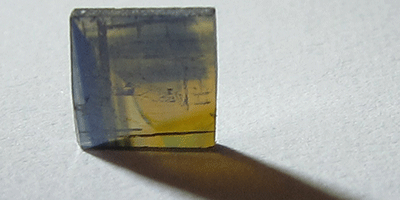Insulator Sees the Light
Ultraviolet light has many uses, including water disinfection, pest control, and detection of counterfeit money. A new study by Andrés Santander-Syro at the University of Paris-Sud in France, Patrick Le Fèvre at Synchrotron SOLEIL, and their colleagues now adds another possibility. The authors report that strong doses of UV light can create patches of nearly-two-dimensional conducting states at the surface of the anatase crystal form of titanium dioxide—a naturally occurring transparent insulator that has a wide range of applications, from paint to sunscreen to dye-sensitized solar cells. The findings demonstrate that UV light can be used to tailor the electronic character of anatase surfaces.
Most of the applications of titanium dioxide anatase involve the electronic states at its surface. Therefore, Santander-Syro and colleagues used angle-resolved photoemission spectroscopy to probe the two most commonly exposed crystallographic surfaces—technically known as (001) and (101)—of the crystal upon UV irradiation. The spectra obtained after a few minutes of UV exposure indicate that the UV light produces oxygen vacancies right underneath the irradiated surface region. In this process, an excess of electrons is released that turns the otherwise-insulating surface patch into a conductor.
Longer periods of UV irradiation (about 1 to 2 hours) can, however, modify the irradiated area up to the complete disappearance of the conducting state. Interestingly, by illuminating a neighboring untouched part of the surface for a few minutes, the researchers could again generate a conducting phase. The results suggest that UV beams could act as “pens” that can “inscribe” an anatase surface with electrical circuits or arrays of conducting nanopatches, on which to build transistors.
This research is published in Physical Review B.
–Ana Lopes





